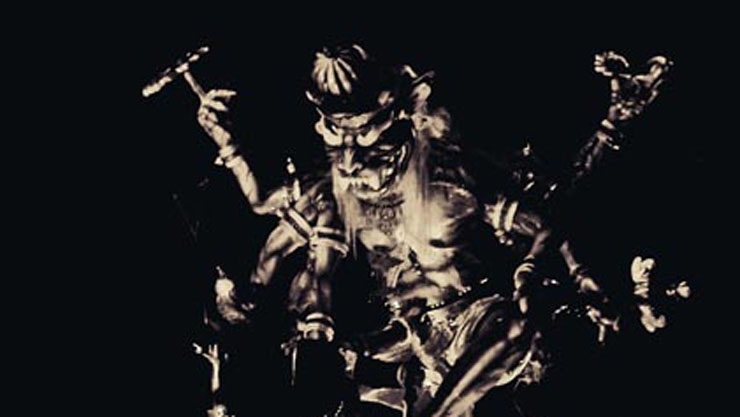Westerners and modern people have a bad habit when it comes to making money: they have a rational approach to economics. You work, they say, save and invest, and then you will earn x % or more, if lucky, in one or five years. There is little pleasure to be had, and no fear. Many people think that it is the best way to become rich. Luckily there are also people, especially in Bali, who still believe there is a better way to access money: “magik” as today’s Balinese put it. Better still: magical powers can be purchased. Which is why, since this issue is devoted to “shopping” in Bali, I think you should consider shopping for a “bererong” to get rich.

First things first, though. Before purchasing your “bererong,” you should learn a few things about magic in Bali. The Balinese have a special knack for it. No, this magic is not of the kind nouveau gurus can sell you in Ubud: it has little to do with “Wisdom of the East”. In fact it is more witchery than magic proper. Classified under the name of “nesti, luh tranjana,” it will take you to the world of Rangda the witch – a manifestation of Siwa’s demonic consort Durga — who dwells, people believe, in the temple of the dead, the pura dalem, one of the three main temples of a Balinese village. Thus it is not uncommon, for someone eager to arm himself – or some say, herself — with magical powers, to go and make offerings to Rangda in the middle of the night. Really scary. If things have been carried out properly, with the right offerings, in the right way and at the right time, and with the help of the right balian (shaman), the supplicant might end up with the power to duplicate himself/herself into a cat, monkey, pig or any other chosen animal. Once you have done so, you can send your leyak “double” to wreak havoc on the person of your choice. So, while you “meditate” prostrated in your room, the leyak you control is out spreading illness and misfortune.
The bererong is one of these “magic” beings. “He” (or she) does not simply bring illness or misfortune in general, though, but can been directed to steal on behalf of his (or her) master. In such instances, he often takes the guise of a white rat, and, as such be sent safely to some wealthy villager’s house with the explicit goal of stealing jewels or money.
The belief in such magical spirits or animals is a fertile ground for village gossip and stories. If for example someone gets rich without seeming to have worked or to have inherited a fortune, other villagers may well suspect him/her of keeping a bererong. They will do so especially if the person involved tends to neglect his/her village duties. They won’t accuse him/her face to face, though, but spread the issue around: “How come Ketut Bodong is making so much money; something must be wrong with him; I was told that he went to visit X (a well-known balian) in Bangli.” Once such issue is spread, there is no stopping its consequences, especially if a threatened party – often a mother in law or an aggrieved party – thinks it has to try some counter-magic. Black or white, one does not know, it depends on which side you are. What is sure is that the bererong is feared for practical, not for moral reasons. If someone works hard but does not make it, one may advise him/her with these words: “Why don’t you try to get a bererong. At least, with a good rat-bererong, your success will be guaranteed.”
Special Temples
The word goes around in the Balinese coffee stalls that there are special places and temples to request a good stealing bererong, usually with the help of a local balian shaman. Foremost among those places is the famous temple of Gunung Kawi, Bali’s most impressive archeological structure. But to go there for a bererong is not without its risk, as the bererong has to be bought. Or rather to be bartered. Against what? A child. Which is why, the one who told you about the bererong of Gunung Kawi may also advise you: “Don’t look for a bererong at this temple, because you may have to pay for it with the soul of your own son”.
The advice may well be strengthened by a “story”: “You know Nang Kocong, don’t you? He went to that famous witch-priest of the Bangli mountain, Guru Mantrasiddhi? He gave Nang Kocong a piece of bread, previously treated with a magical mantra, to eat whenever he wanted to get a good rat-bererong. Luckily it did not work as expected. Do you know why? When Kocong was home, already “meditating,” and on the verge of putting this piece of bread into his mouth, his son, who was sleeping nearby, suddenly shouted while crying: “Dad, why are you torturing me so?” Upon hearing this sudden call, Nang Kocong could not eat the bread. So he did not get his bererong and is still poor. But his son is still alive and well.
At the other side of the bererong story are the targets, the rich people. How to avoid having one’s money stolen by a bererong? People with “knowledge” say that one’s money should always be bundled together with ilalang grass and that, after doing so, one should recite a protective mantra. It is better than a safe, they say. Why ilalang grass, which is a long, sharp-cutting kind of grass? Because, the story goes, ilalang grass is blessed by the gods. During the primeval churning of the cosmic mountain, standing since the creation of the word in the middle of the milky sea, when gods and demons were each pulling respectively at the head and tail of the cosmic dragon Anantaboga, and thus churning the mountain to produce the elixir of life, some of this elixir fell on the leaf of the ilalang, thus blessing it with the attribute of immortality.






